
Spotted this morning on Second Avenue... in front of the Starbucks at East Ninth Street... Someone wrote "Kill him" in chalk with an arrow pointing toward the sidewalk space outside the 13th Step...

Anyone know what this is about?




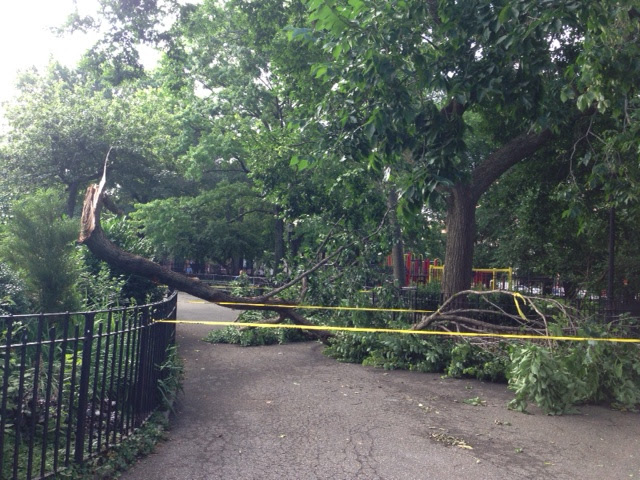

Once more the time has come to clutch our pearls and put on our marching pumps and make Manhattan a place worth being in again.
The Drag March in New York City emerged 20 years ago at the Stonewall 25 commemoration when the organizing committee for that event asked that drag and leather folk to leave their wardrobes at home. Instead of buying into this attempt at "normalizing", the Drag March celebrated Gay Spirit in all of its' manifestations and became the most authentic celebration of all that Stonewall truly was and is.





With the summer in full swing, a lot of our clients are coming back to New York, and we wanted to take a moment to give an explanation for a term that has been and will inevitably be thrown around while they're here.
Three reasons why we don't call our clients "crusties"
1) The term "crusty" is derived from "Crust Punk," a punk movement started in the 1980s out of England with followers who referred to themselves as "crust punkers." Being a "crusty" is like calling someone a Deadhead. 99% of our clients do not refer to themselves as crusties, so we don't either. The term gets thrown around a lot in the East Village because it's a quick way to define a group of folks who look a certain way, but that doesn't make it accurate.
2) When asked, "What do you consider yourself?" — almost everyone told us their name. The first time I asked someone that question, I felt like an idiot because I know that personally, I don't walk around introducing myself as, "Hi, I identify as a white female and my name is Andréa." I start with my name.
3) Our clients are individuals, and most of them are trying to transition out of their current situation. It may not always look like it to outsiders, but there are many complex issues right under the surface that each person copes with in their own way. Tagging someone as "crusty" deepens the stigma and does not promote positive change.
We're The Space at Tompkins, a harm reduction organization whose mission is to help homeless travelers move towards improved health and self-sufficiency. We've been doing this since 2009.

In court documents, Steven L. Einig, a lawyer for a company called Centech, which holds the building’s mortgage, stated that Yippie Holdings, which bought Number 9 along with a nonprofit called the National AIDS Brigade, had failed for more than five years to make payments on the $1.4 million mortgage.
A lawyer for Yippie Holdings, John Diffley, said in an e-mail that his clients “were compelled into foreclosure with payments being rejected” by Centech as part of a scheme or plan to take over the building.

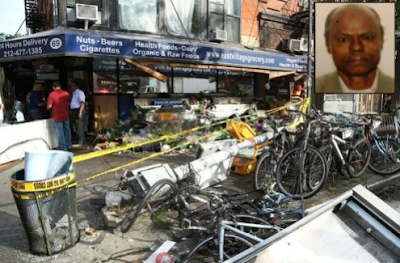
I wanted to thank you and all your readers who have helped with the fundraising effort for Akkas Ali, the florist who was severely injured in the horrific car crash on East 4th Street and 2nd Avenue on June 19.
I am pleased to say that, at the completion of our first week of fundraising, we have raised $11,792 from exactly 200 donors. This is an amazing accomplishment, but it is only a start. We need to raise a lot more before the fundraiser ends on July 20, and the first week is typically the easiest.
Here are three ways to help First, go to www.giveforward.com/akkasali and make a donation of whatever you can afford. Second, when you make your donation, leave a little message of support for the family when prompted to do so (the family has been reading these messages and says they are a source of rare joy during these difficult times). Third, and perhaps most important, PLEASE use whatever methods you can (including email and social media) to help spread the word about this fundraising effort.
Thanks to everyone again for their kindness and generosity!

Kelly Magee, the Department of Buildings’ press secretary, said what’s going on is that Shaoul is indeed removing the tenement’s illegal seventh-story penthouse. He also had added a sixth story but is being allowed to keep that. The work is being done in compliance with a Sept. 12, 2012, ruling by the Board of Standards and Appeals.
“Work is being performed to dismantle the penthouse, in accordance with approved plans,” Magee said. A crane isn’t being used. Rather, the penthouse is being dismantled by hand, as in “with handheld devices,” Magee said.
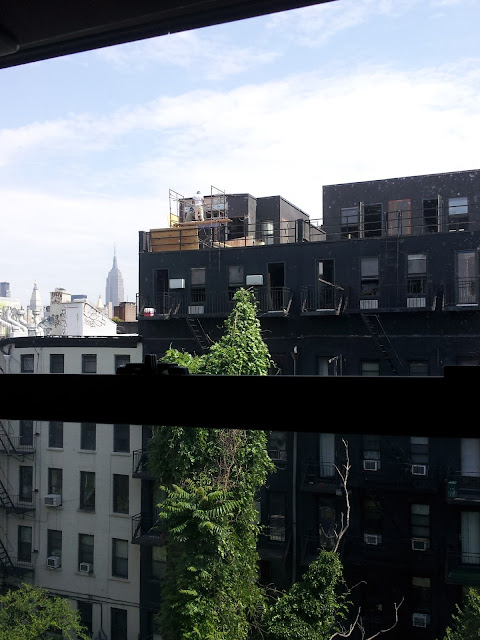

The French Embassy along with NYC Parks and Recreation is thrilled to announce the 6th annual Films on the Green festival. Films on the Green is a free out-door French film festival that brings classic and contemporary French cinema to New Yorkers in different parks around the city, select Fridays throughout the summer...
Events are free and open to the public. Not to worry there are English subtitles!
This year's theme celebrates love — " à la française," the seduction, the passion, and the jealousy. French DJ’s from WNYU will spin music before the screening, so make sure to get there early! Films begin at sunset (approx. 8:30), we invite you to pack a picnic and bring a blanket to enjoy this summer’s festival.

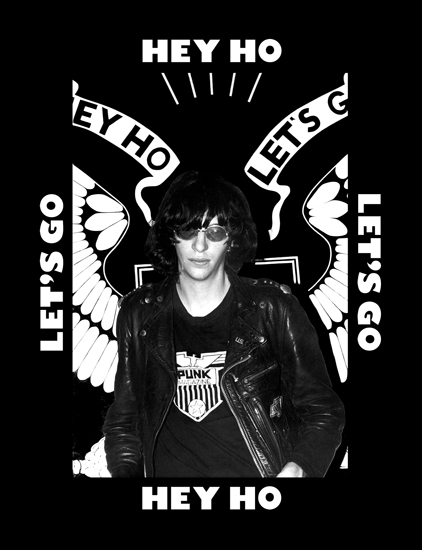
Michael McKenzie presents:
ROCKicons
Exhibition Dates: June 27 - August 4, 2013
Reception: Thursday June 27, from 6-9PM
Featuring iconic rock photographs by legendary industry professionals: Bob Gruen, Mick Rock, Gene Shaw, and customized Swarovski crystal guitars and sculptures by Robert Kantor.








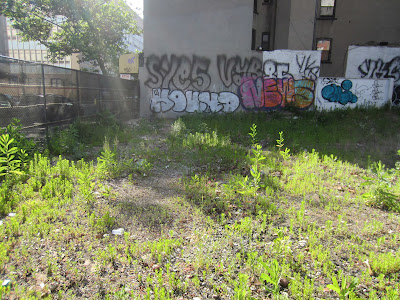
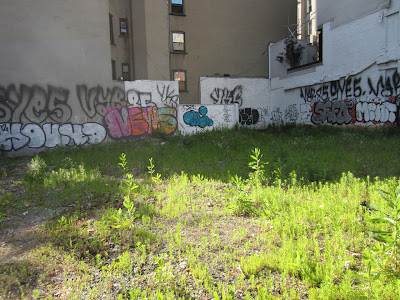




Went with some friends [Tuesday] night around 10PM. Ordered a few pitchers and was told "no more draft beer." Ordered bottles. They said all we have is Bud. After a few of those we were told no more beer, so we switched to whiskey and wine. After that we just decided to buy a six pack from the deli around the corner and bring it back in.
So all in all, a pretty standard blarney cove night.
The interior living space is almost 5200 square feet.The back of the house includes an Eat-in Kitchen, a Study off the Master Suite, Family / Media room, and Home Office. The home's spacious layout could easily accommodate up to seven bedrooms. A charming rear garden is paved in bluestone and lushly planted, while a wood-decked roof terrace offers an additional 350 square feet of outdoor living space in which to relax, entertain, or just enjoy the tree-tops and long southern views to the lower Manhattan skyline.






All entrees at Apt 13 will be market driven and will be served in the same style as Korean barbeque. Every dish will be served with side dishes, appetizers, condiments, sauces, salads, and garnitures. Seasonally and locally driven. Family styled dinners. Meant to feel reminiscent of an intimate sit down dinner in our apartment.


Name: Phillip Giambri
Occupation: Storyteller, Submariner, Actor, Theatre Sound Tech, OTB Announcer, Computer Systems / Network Administrator.
Location: St. Marks between 1st and 2nd Avenues.
Time: 1:00pm on Monday June 17th
I’ve been here a long time. I’m from Philadelphia originally. I was in the military when I was 18 and I got out at 22. I was down in a submarine. It’s a strange life. Then I went back to Philly and I went to a drama school for 3 years. Then I moved to New York for Summer Stock [Theatre]. I was passing through New York on my way to California and was taking some acting classes with Stella Adler and I kind of got sidetracked.
The first job I got was on 4th Street between 2nd and the Bowery. It was a good theater block. Cafe La MaMa was there and the Playwrights Horizons and the Fortune Theatre. There was a lot going on in that little neighborhood. So the first job I got was as an assistant stage manager, a sound man, and an understudy for Michael Douglas for the very first play he was ever in in New York, called 'City Scenes.' Dominic Chianese, the Uncle from 'The Sopranos' was in it as well as Raúl Juliá.
I got to move down here by way of the West Village. I moved in with a lady on Washington Place for awhile and when that ended I had nowhere to live. I was going to the School of Visual Arts for awhile and I slept in my instructors loft until he got tired of me, so I moved in with acting friends from Summer Stock on East 9th Street for a couple months. It was really awkward because there were four of us living in a tiny apartment. We had to smoke a lot of dope to stay sane.
So they helped me get the apartment on St. Mark's Place across from the Electric Circus — building number 26. In the ‘60s and early 70s, the Electric Circus was like the Studio 54. It was like a happening place. You would take acid or mescaline or mushrooms or something and go in there and the whole place was designed to make you go bizarro.
I only wanted to be an actor and at the time I erroneously thought that if I worked in the theater rather than doing some regular menial task that at least I would get to know people. Just the opposite happened. Over 3 or 4 years, I gained such a reputation as a competent technical person, who were hard to find outside the union, that it was all the jobs I was getting. I would audition for a part for a Broadway producer, who would know me cause I did his sound work and he would say, ‘C’mon Phil, actors are a dime-a-dozen. We need a stage manager.’
I wound up managing a recording studio that worked with the theater for several years, while I was still looking for acting work. I was the manager, but every summer I laid myself off because we did only theater recordings mostly, and rented sound equipment to theaters and there was no work in the summer. So we’d sit out front on the stoop and smoke dope and drink wine all summer. I did that for like 4 or 5 years in the early ‘70s. It was kind of like a four-year party. People were in and out all the time, crashing, the building was very liberal in terms of sexuality and drugs and stuff. That was around ‘70 to ‘75 or ‘76.
I started to grow up a little when I met my wife. We went on our first date to the midnight movie show at the St. Marks Theatre to see 'Reefer Madness.' It cost $1 and you could bring your own food in and your own weed in and you could sit there all night and nobody would ever hassle you.
In ’74, we formed a St. Marks block association. There was a very influential guy in the neighborhood, Jim Rose, who ran the The Eastside Book Store. He became the head of the block association and we were just overwhelmed with crime in the neighborhood. Once the hippie thing wore off, all that were left were drug addicts and opportunists. It turned from the Summer of Love in ‘67 and ’68 and started really getting dark around ‘73. We realized there were 17 Methadone clinics in the neighborhood and there were all these junkies going there regularly and supporting their habits by beating us up and taking our money. We had the men’s shelter on 3rd street where every crazy person in New York State that got out of a mental hospital or prison was sent to, who were going around killing people and beating people up. We had several cops shot in the neighborhood. It was getting ugly.
I was the police department representative of the block association, so I would get all the crime statistics every month and what a wake up call that was, when you’re actually getting the numbers. We also had fundraising street fairs to try and improve the neighborhood. We got gates and window boxes put in front of the ground floor apartments.
We succeeded in getting the police commander changed in the Precinct. I used to go to all the police meetings and this new guy came in named Gunderson, back in ’75, and he changed everything down there. The 9th Precinct had the reputation, if you got out of the Police Academy you had to learn to be a bag man, and they sent you to 5th Street to learn that. It was a very crooked place. That was part of our problem — the cops had their own thing going on and they couldn’t give a shit about what we did. So with a little muscle and a little politicking, we got rid of the commander down there and they brought this guy Gunderson from Staten Island. He was a hard case who didn’t smile. Nobody liked him over there. We loved the guy. He cleaned the whole Precinct up.
At the time, all the cops kept their windows rolled up and just drove by everywhere and didn’t get out of the car. So we fought to get a permanent foot-beat cop, which they never did in those days. Gunderson said he couldn’t justify one permanent person there since they were so shorthanded in cops, so a friend of mine and I went around at night and took pictures of all the cops, what they used to call cooping, when they’re sleeping on duty in their car and they’re supposed to be patrolling. We had a picture of about 25 cops cooping and we brought them in and said we either get a beat cop or somebody uptown is gonna see this.
So we got a beat cop named George and he lasted here almost 10 years. He was a really sweet guy who used to go to everybody’s birthday parties, christenings, Bar Mitzvahs, and that was at a time when everybody hated the cops. He was like a part of the neighborhood and I don’t think he ever drew a gun in his life.